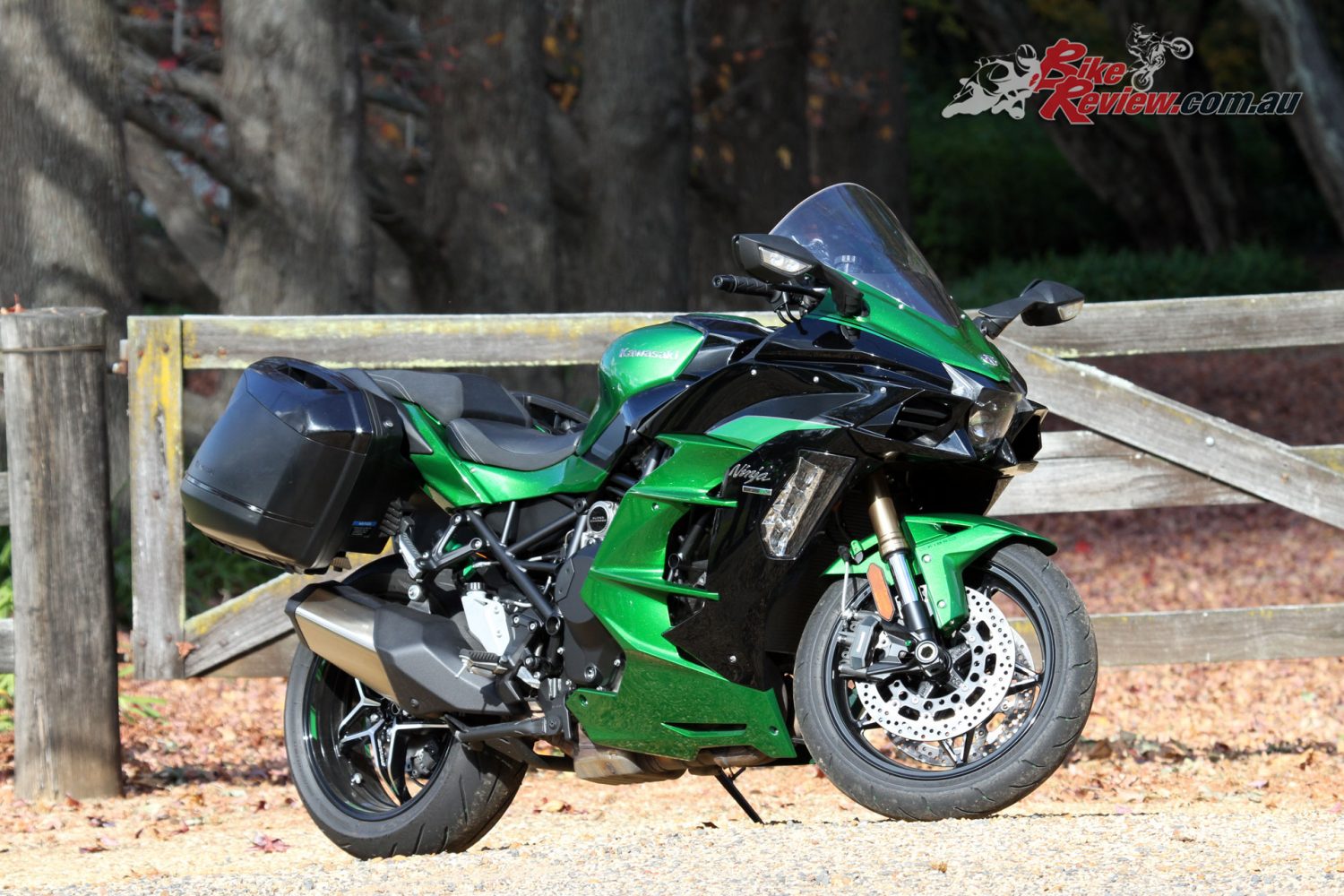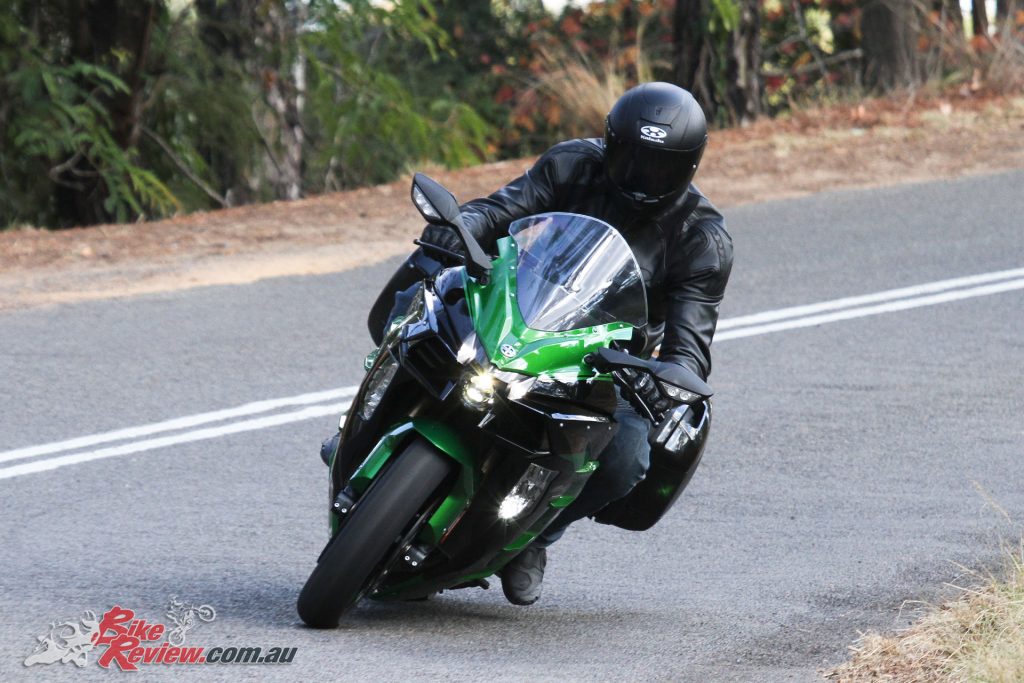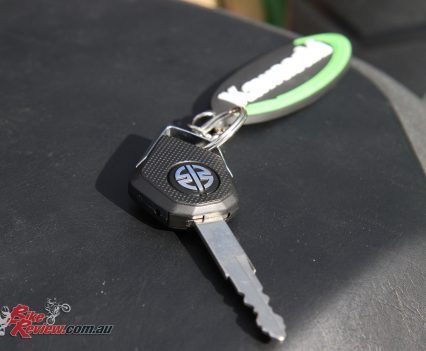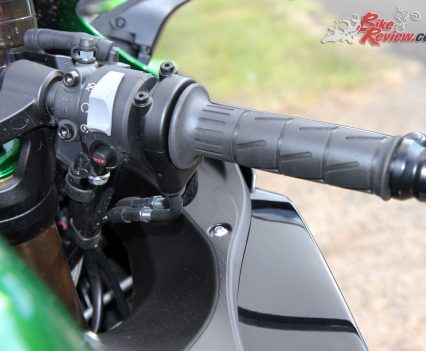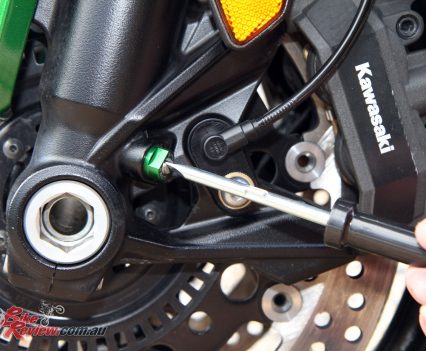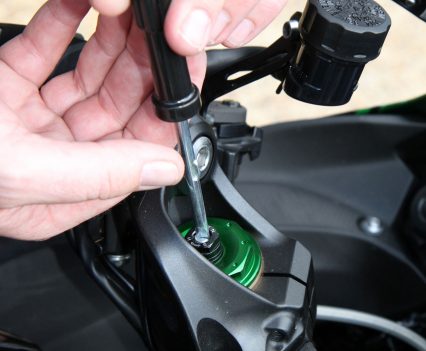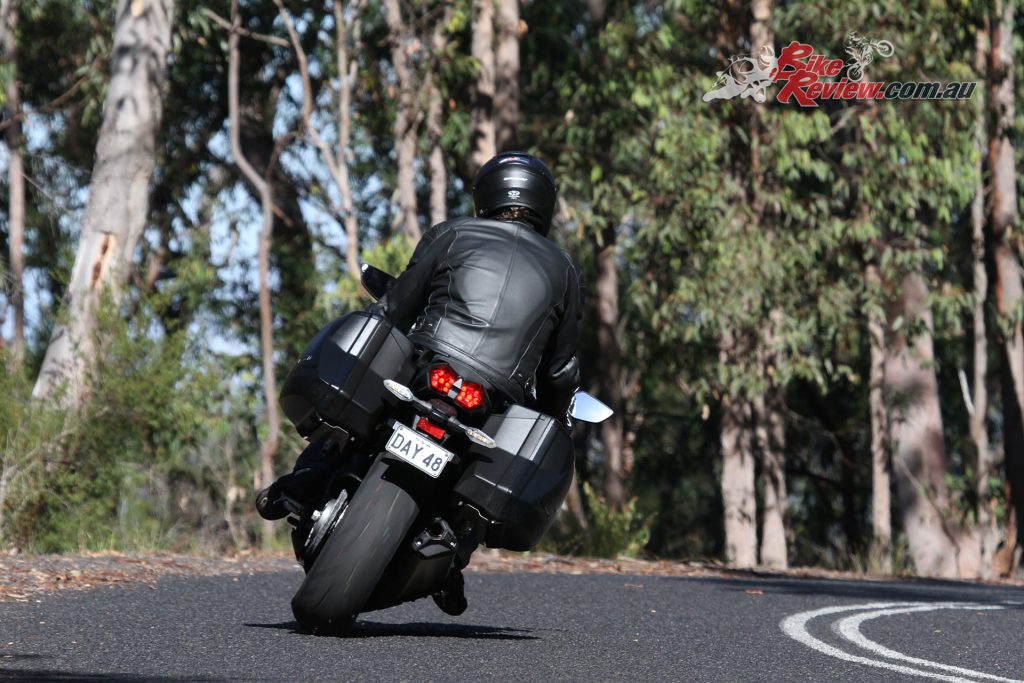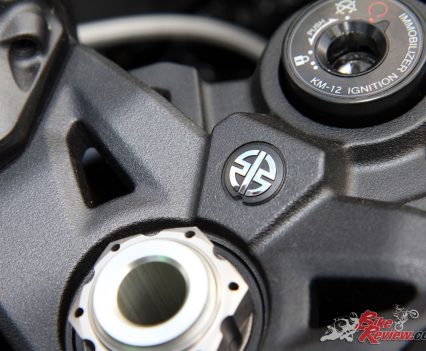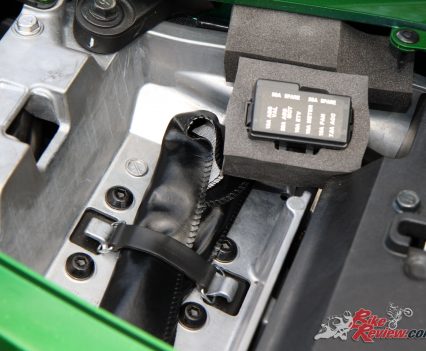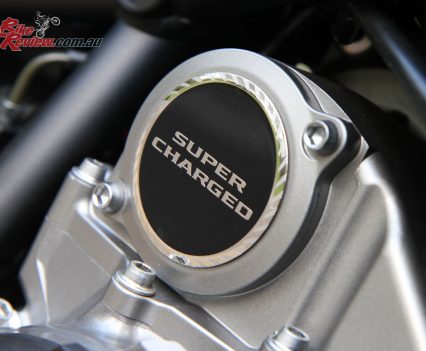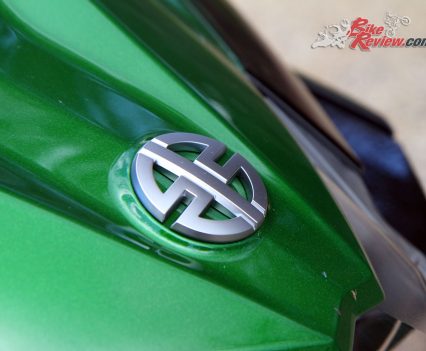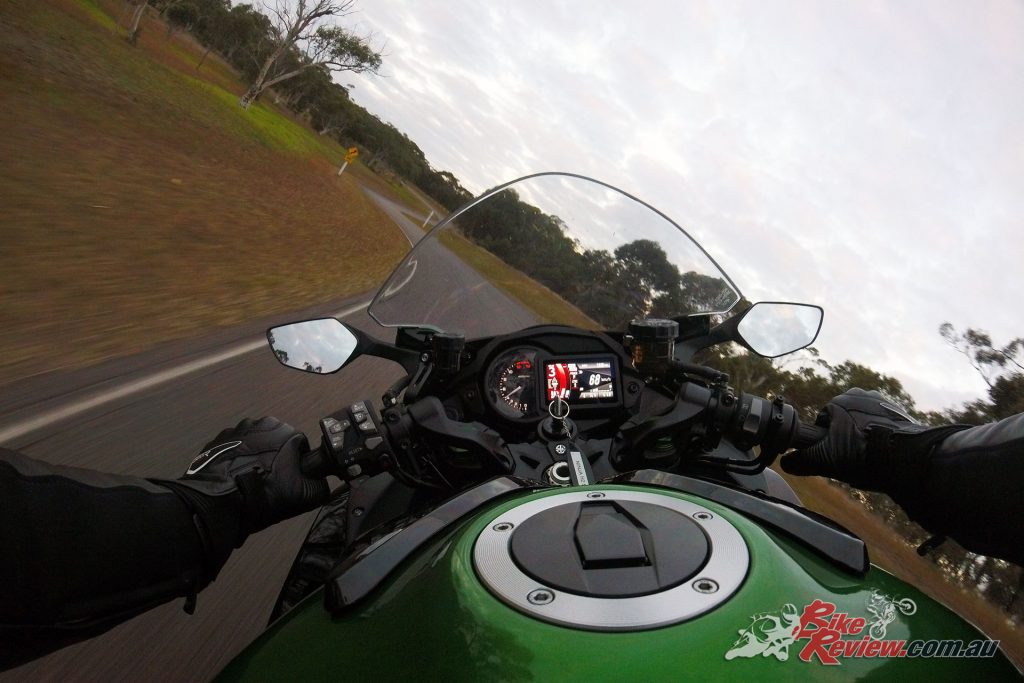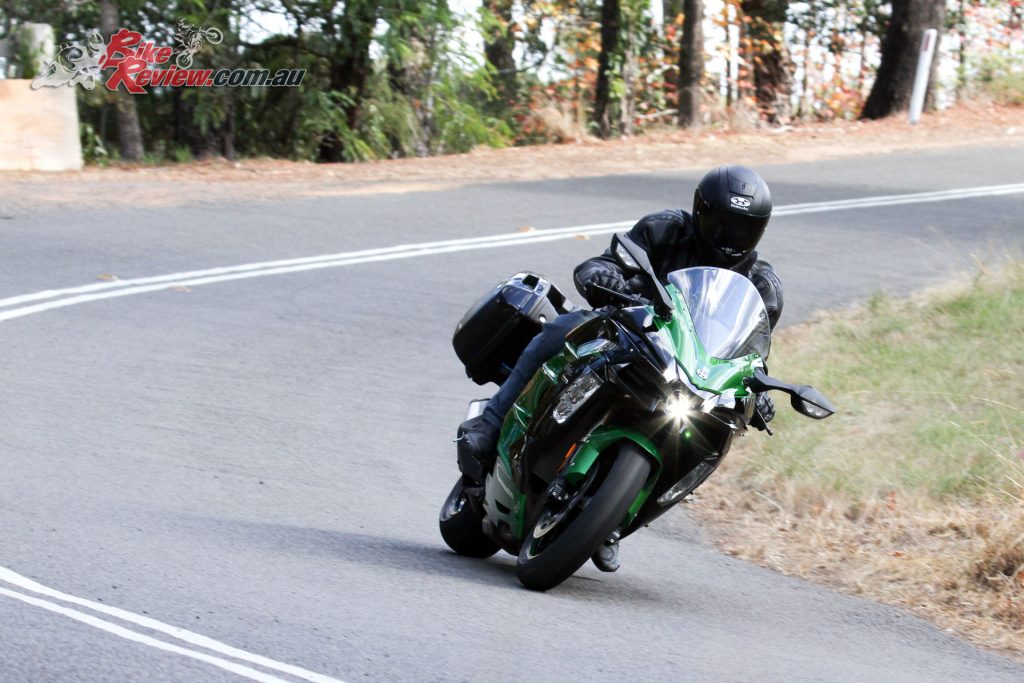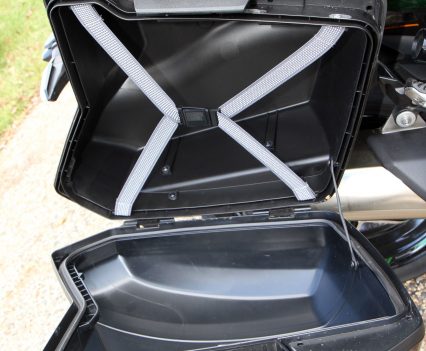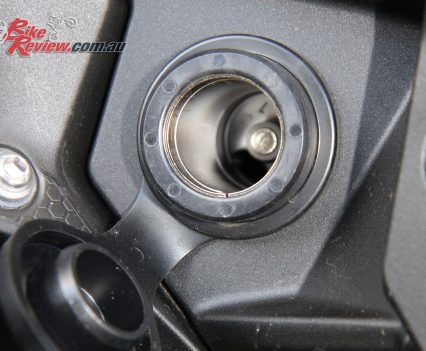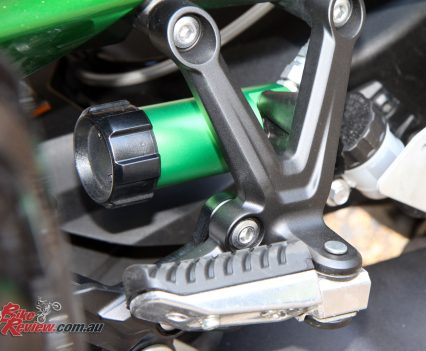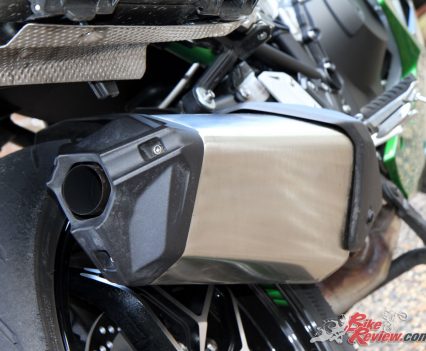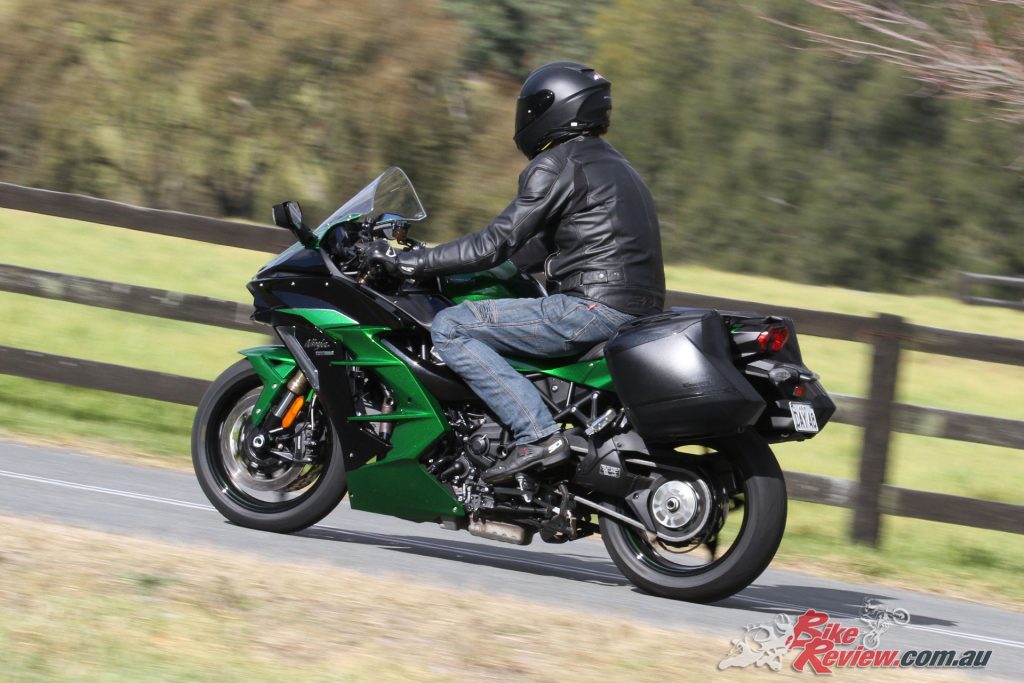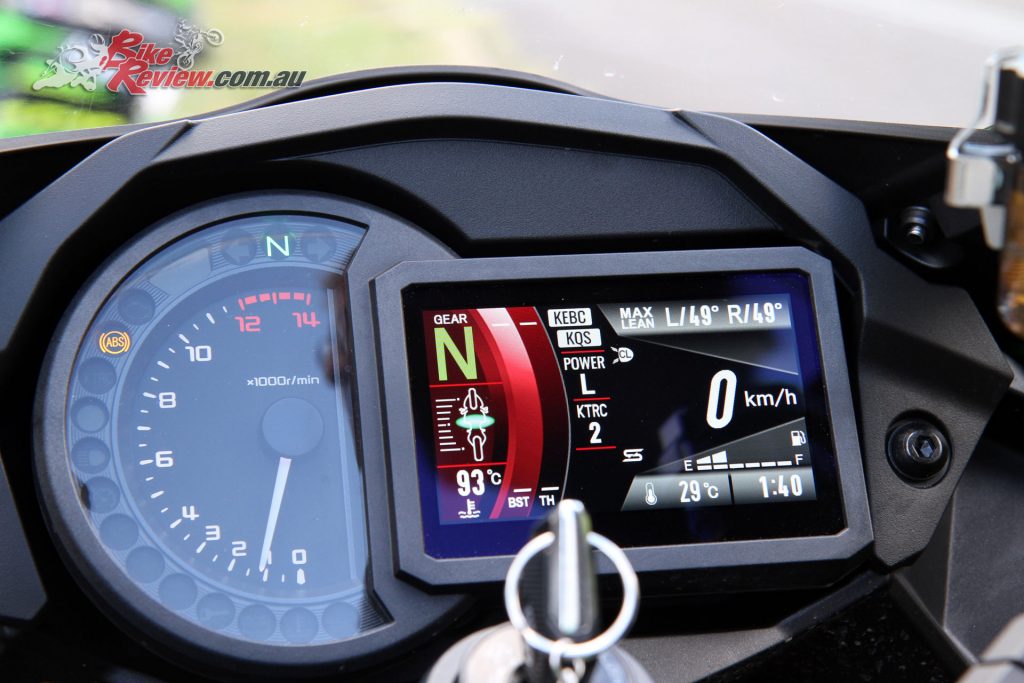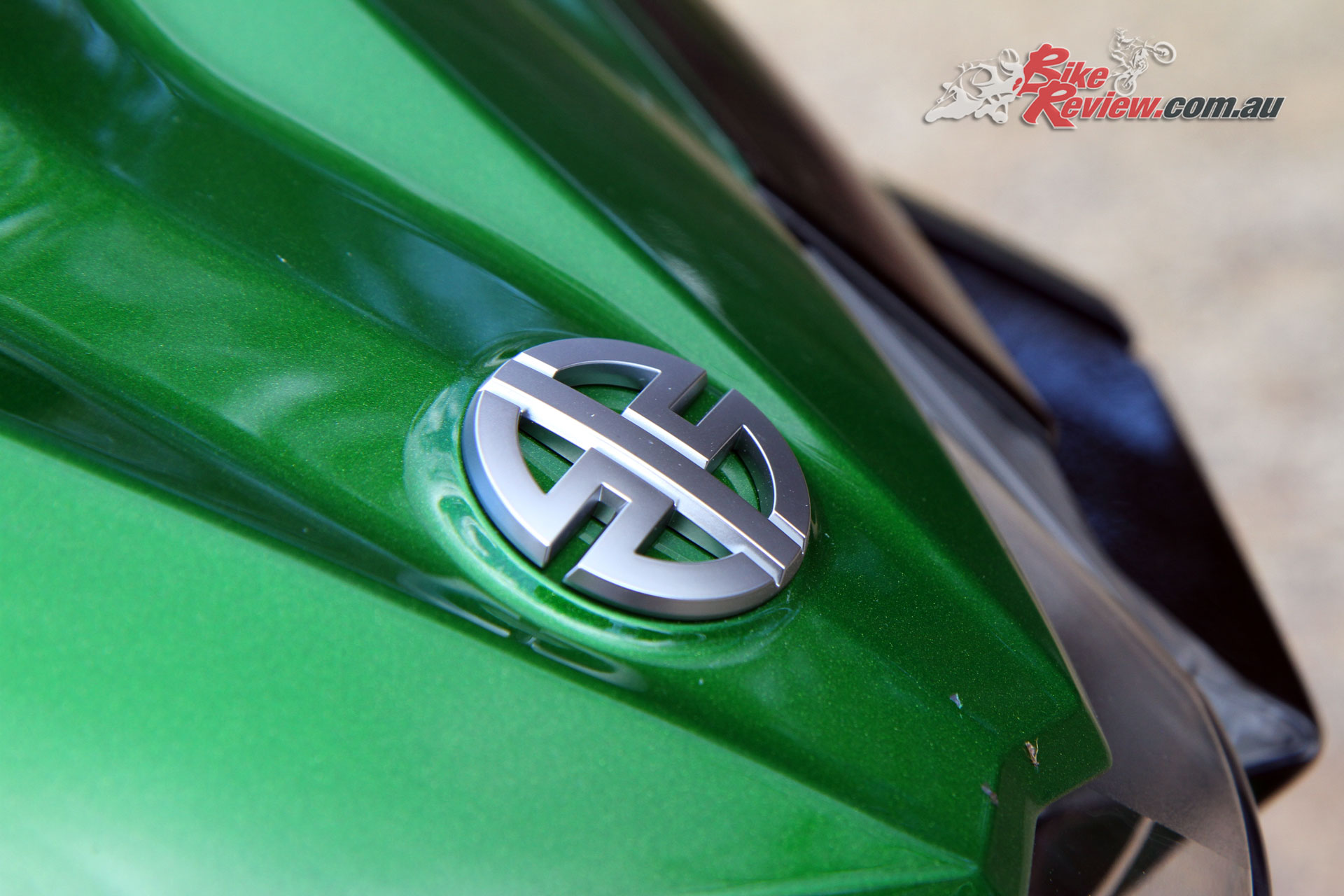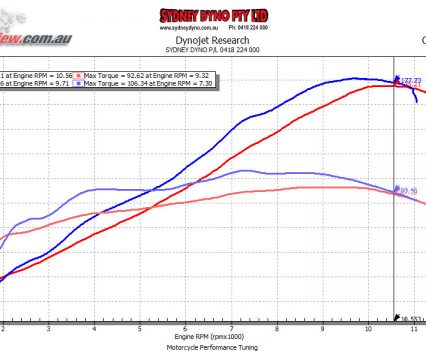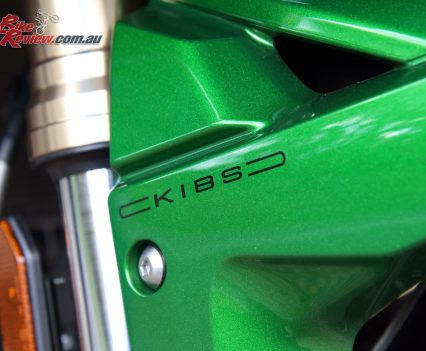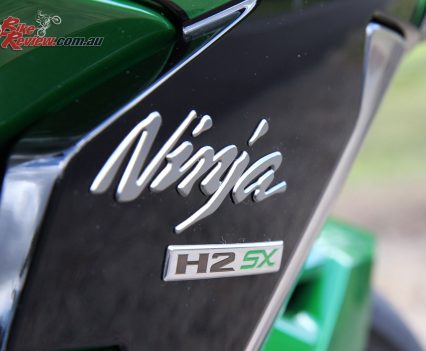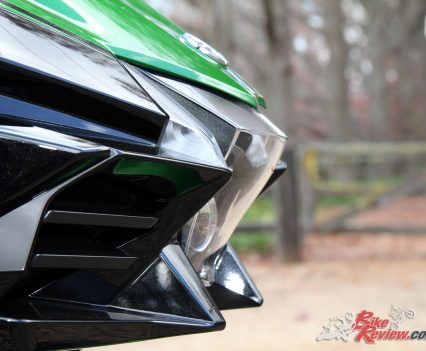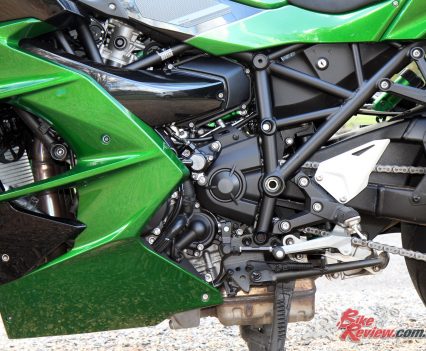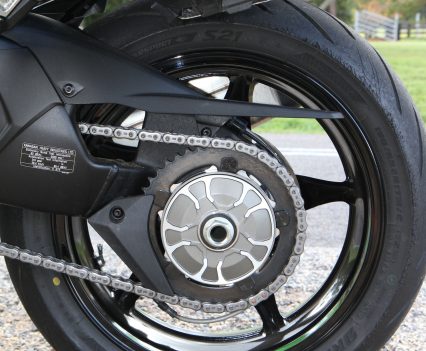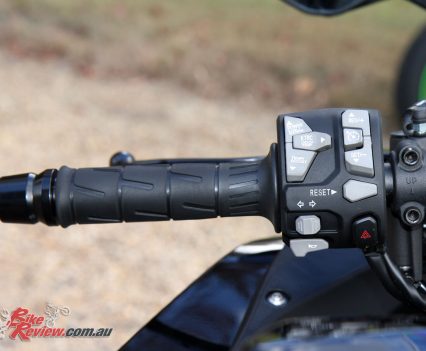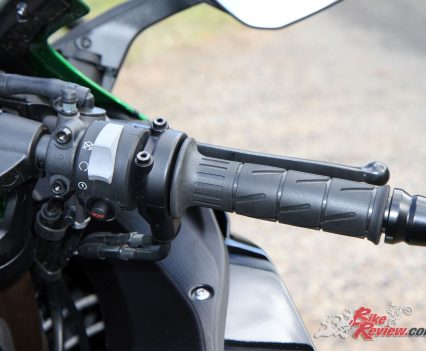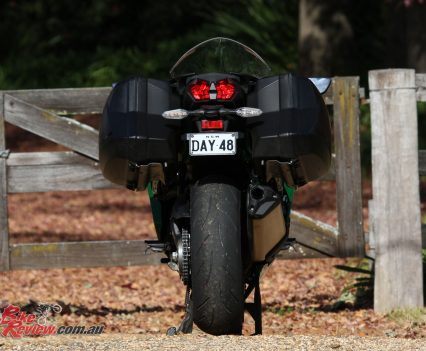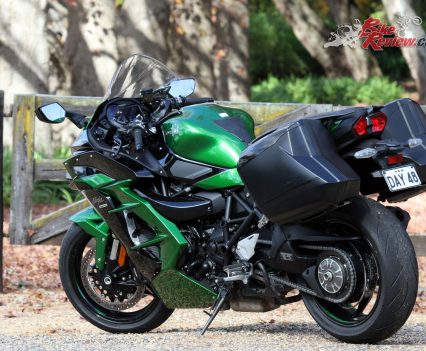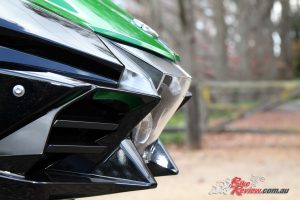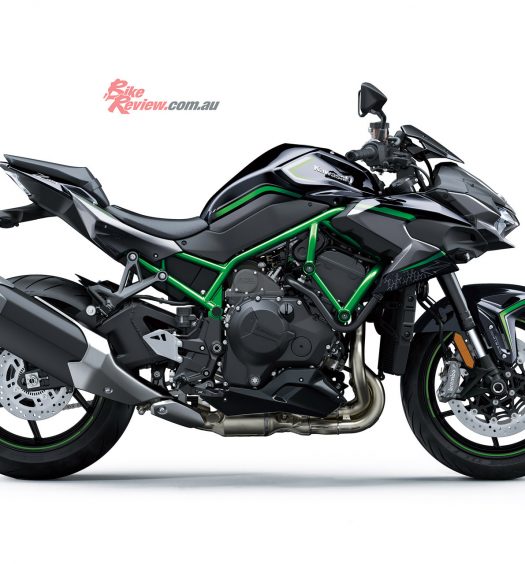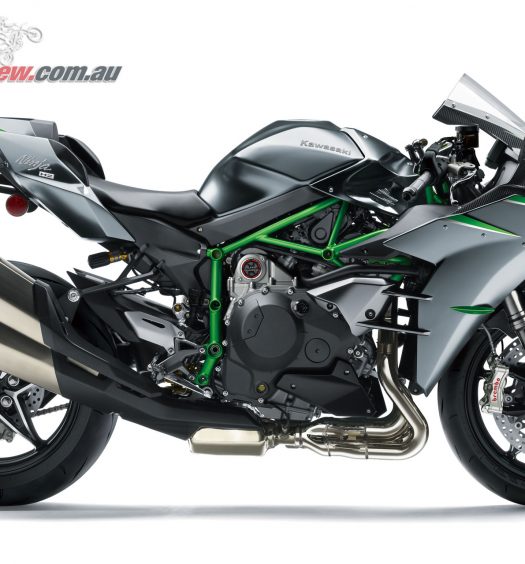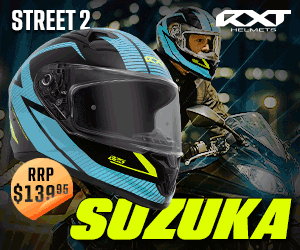With touring comfort and hyperbike performance the Ninja H2 SX SE proves you can have your cake and eat it. Here is our Ninja H2 SX SE review... Photography: Heather Ware HMC Photography
We spent a week living with the Ninja H2 SX SE and handing the key back was not easy. We just didn’t want to part with the Ninja. Aside from being stupidly fun, the SX makes mince meat of Australian roads and turns the longest ride into a short blast.
Check out both the World Launch: 2018 Kawasaki Ninja H2 SX SE and our Video Review: 2018 Kawasaki Ninja H2 SX SE, both cover technical highlights in detail… You can also find the original H2 review here: Review: 2016 Kawasaki Ninja H2 – Street, Track, Drags.
There is a new hypersports touring King and you are looking at it. When it comes to fast comfort, the Ninja H2 SX SE leaves the rest behind. With 175-plus rear wheel horsepower and over 92ft-lbs at the wheel, it is hard to believe the beast is under 1000cc.
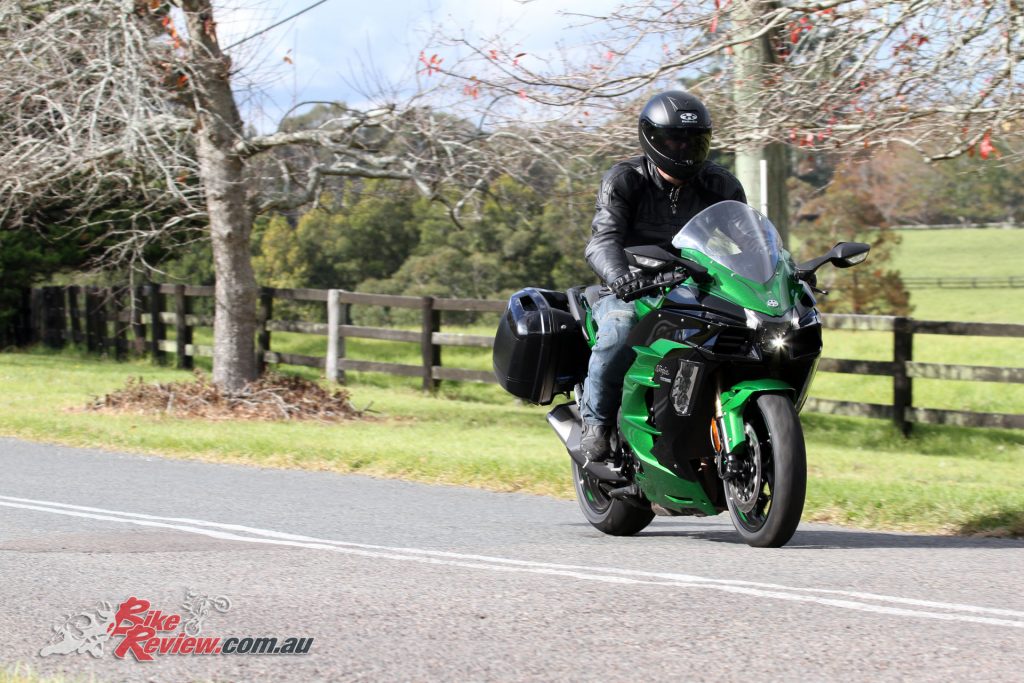
The Ninja H2 SX Se makes the ultimate sports tourer. It’s comfy and mellow when you want it to be but open up that throttle and even the most mundane ride becomes a blast…
Sure, the legendary Hayabusa and ZX-14s still make more power and torque and are faster but they don’t have a touring riding position, luggage, cruise, heated grips, a tall screen or a supercharger! The FJR1300 and 1400 GTR are equally as comfy but not as equipped and they don’t make you laugh out loud every time you open the throttle…
Based around the crazy Ninja H2, the SX SE is Kawasaki’s first mainstream supercharged bike and hopefully there are more to come. Well, I could tell but, you know the line…
The chassis is shared with the H2 but the SX has the engine tilted forward, larger main tubes, an extended headstock area for steering lock and wheelbase, a reinforced sub-frame, longer swingarm and of course touring bodywork.
The engine is retuned with a different cylinder-head, camshafts, crank and pistons, a higher compression ratio (11.2:1 v 8.5:1), different supercharger impeller and plenum chamber, and is actually 3kg lighter. We only get the premium SE version, which has more electronics, cornering lights, machined wheels, two-way shifter, centre-stand, taller screen and heated grips. But for the full technical details check out our launch report mentioned above.
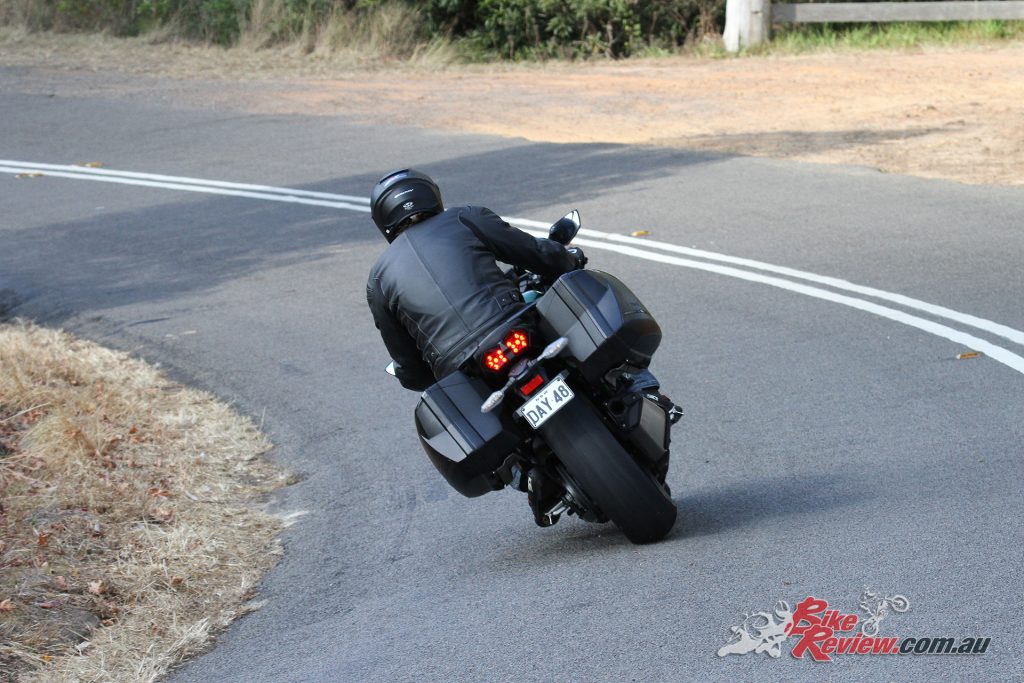
Once on the go, you really don’t feel the weight of the SX SE. The Ninja has light, responsive steering yet is stable and sure-footed. The suspension, after a few clicks softer, was fantastic over bumpy flowing roads like this.
THE RIDE – NINJA H2 SX SE
I picked the SX SE up from Kawasaki HQ mid afternoon, meaning I would cop the busy first wave of Sydney’s peak hour traffic. With the main and only route North a triple-lane truck infested nightmare, I knew I was in for prolonged periods idling away, as there was no hope of lane splitting on the big Ninja, panniers and all. I figured I would fry with the heat off a supercharged engine. I needn’t have worried…
The ride was slow and there was a 10km stretch that took over an hour. The SX didn’t go over 90-degrees and I didn’t hear the thermo fan at all. There was bugger all heat on my legs, and I was wearing DriRider jeans, so I was impressed, and comfortable. The seat is broad and supportive, the reach to the ‘bars and ‘pegs natural and all-up it is a really nice layout.
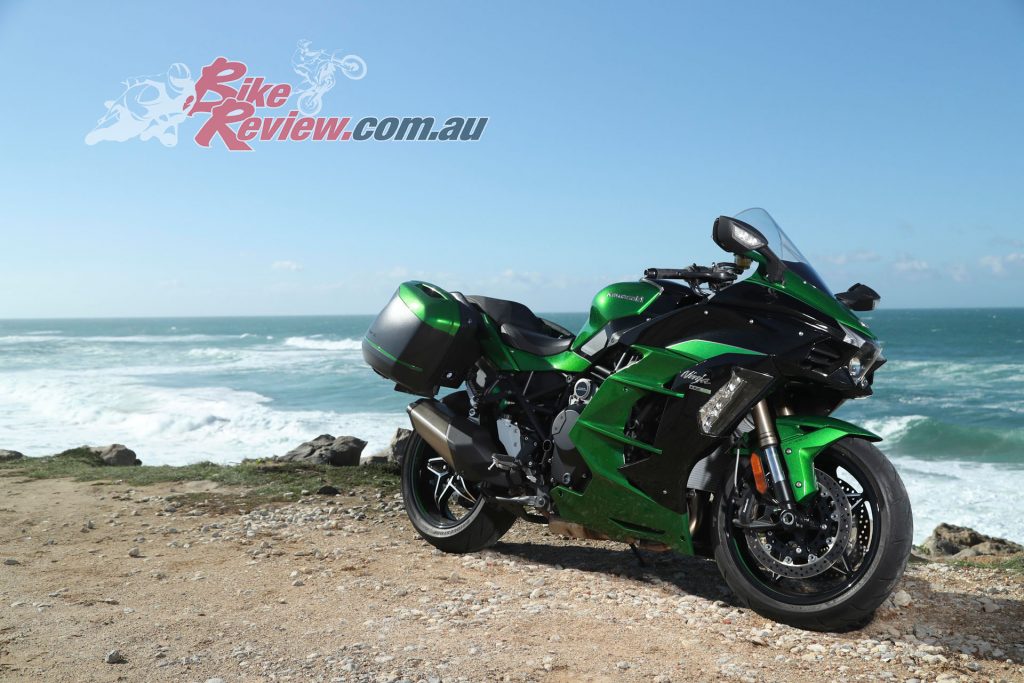
There’s nothing holding you back from working with some of the most exciting road bikes in the world!
The SX is easy to ride in traffic, the engine is smooth and in Power Mode L (approx 50% power and torque) and KTRC (traction) on Mode3 it is a big pussycat and super easy to handle. I had KEBC (engine braking) on Light. There are two settings, Off and Light. The clutch is a tad heavy with travel late in the lever release but I got used to it.
At very low speeds, though, the weight of the bike is not as easy to manage as some other bikes in the same kilo range. The weight is carried high and it’s a both feet on the ground job in bumper to bumper. I found I wasn’t able to keep it on the balance point with a bit of clutch/throttle and rear brake. Still, for a big bike, traffic is no issue. It was nice to break free and hit the motorway though…
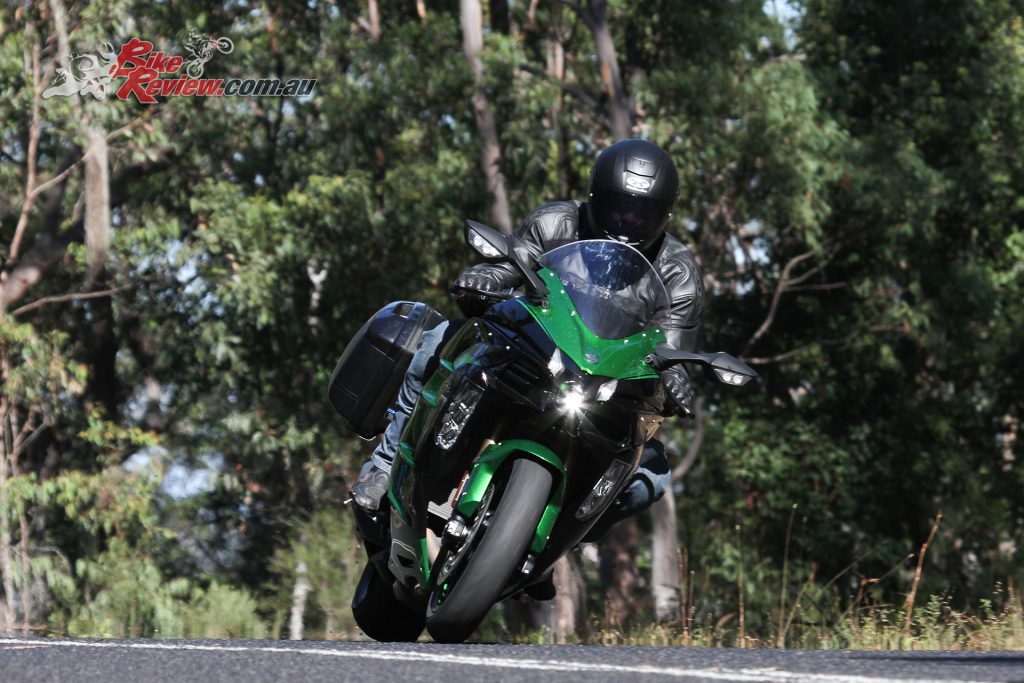
The H2 SX SE is a really capable cornering bike for such a big machine. It also eats up the highway miles in comfort thanks to cruise control, a tall screen and lots of room for rider and pillion…
Once I escaped the masses, I switched to Power Mode M (75% power and torque) via the Mode button on the left switchblock. I then set KTRC to Mode 2. The bike instantly felt more alive and I began to explore the upper rpm range a bit, playing with the throttle and building some boost to get a feel for the supercharged engine.
I then set the cruise control and headed north for half an hour bang on 110km/h, where the 998cc inline four ticked along at approximately 4500rpm. Disengaging the cruise a few times for overtaking, there is plenty of oomph on tap in top. In this mode and rev range, the bike feels similar in response to an FJR and slightly less so than the big 1400 GTR.
Switching to Power Mode F (100%) gives a more responsive throttle and a Hayabusa-like punch, more so than a ZX-14R, which is peakier. The engine is so linear, from 3000rpm onward there is a surge of seemingly limitless torque on hand, spiced up with a tasty pinch of supercharged horsepower that really starts to make things interesting from 6000rpm and beyond. From then on, the scenery becomes a blur… The grin widens, and the old brain struggles to process things.
I could happily ride this bike for a 12-hour Interstate slog. The boredom could be broken by playing stupid games and getting that supercharger fluttering and out in the remote areas it’d be insane fun emptying that 19L fuel tank in a hurry. By the way, cruise control will only work below 200km/h…
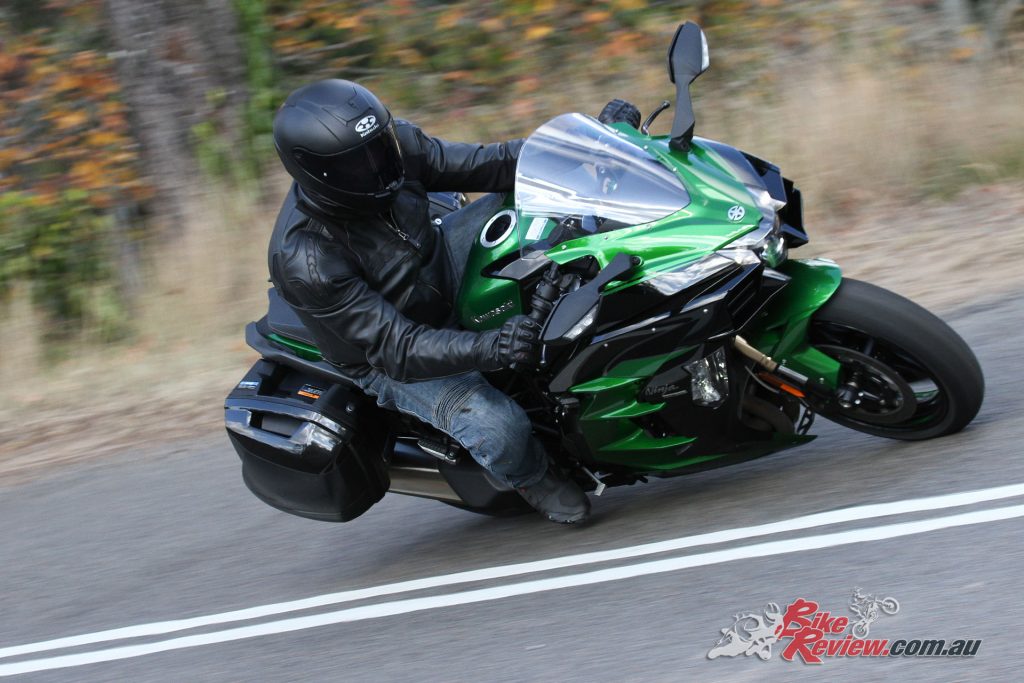
The suspension and brake package on the HS SX SE is a strong point. The bike responded to small changes in damping and spring, making it a real weapon through the hills. It was a blast.
Speaking of fuel, there is an economical riding indicator but I hardly saw it, only when on cruise on the motorway. Kawasaki state a range of over 300km from the 19L tank, around 5.8L/100km as the low fuel indicator flashes with 3L left. I got nowhere near that, averaging 6.9L/100km, at times closer to 10L/100km as Roland got on the World Launch, where he said some riders were able to get 7L/100km.
Most of my riding was far from cruising though. By experience, I’d say the SX is as good if not better than the average in category when cruising but when on the gas, it is a fair bit thirstier than the others. It is the price you pay for supercharged fun!
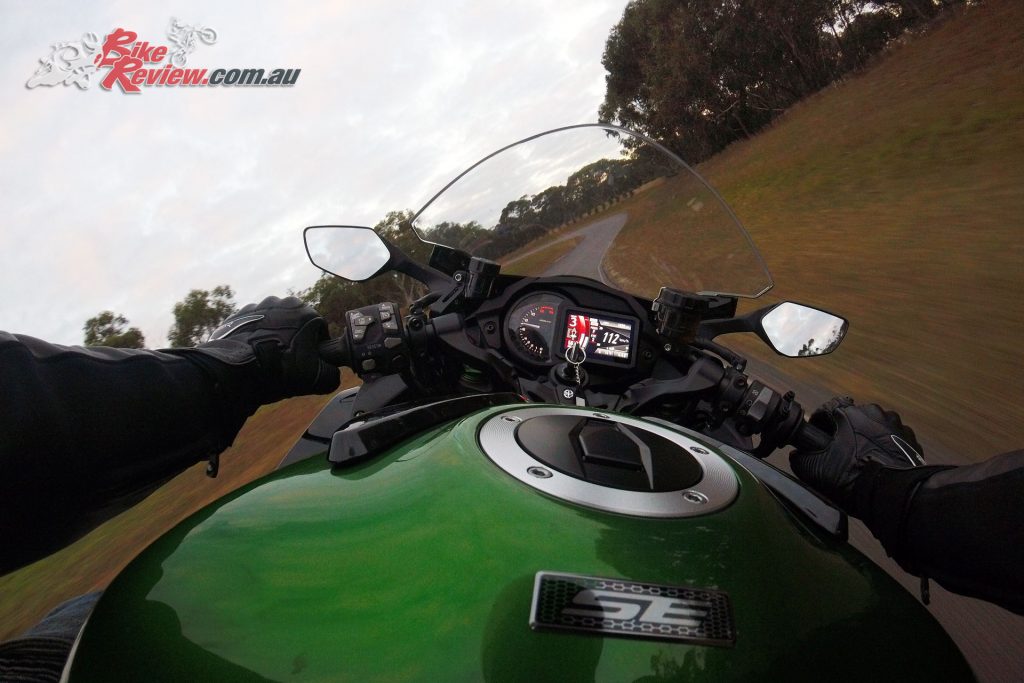
Getting busy on the throttle sees the fuel gauge swing down but the reward is huge grins. This thing is very fast and very capable in the corners and between them!
Hitting the corners on a big tourer can be a drag but not so on the SX. Cornering is where the bike is in its happy place. Sure, it is not a sportsbike or even a ZX-14R or ‘Busa, the latter of which can be ridden sportsbike style, but as an upright riding position bike it’d be hard to beat the SX through the hills. It has plenty of ground clearance and is easy to throw around thanks to the commanding riding position and balanced chassis.
Despite the top-heavy nature, the wide ‘bars and ‘pegs mean flicking the SX from full lean to full lean is easy work. The bike settles quickly thanks to the well damped and sprung suspension at both ends and there is minimal wallowing or unsettled behavior, it just settles and tracks through the turns.
Initially bumps were unsettling the bike, I was getting big jolts through the ‘bars and seat, but backing off the compression sorted that. I also added some rear spring via the easy access remote preload adjuster to give some more support at the back. This is a good feature for when you load up the panniers or pick up a pillion.
Braking performance is second to none. There is strong initial bite and really good power on hand, along with intimate feel and modulation. The brakes are the real strong point of the chassis for me. The way they stop such a big bike is admirable, particularly with sportsbike-like feel available.
The rear brake is good for balancing braking duties and the bike is equipped with of course ABS but also KIBS (Kawasaki Intelligent Braking System), which helps regulate braking pressures during sportier riding. Whatever it does, it does it well as the brakes did not intervene at all when I was testing, sometimes very hard, including on our proving ground.
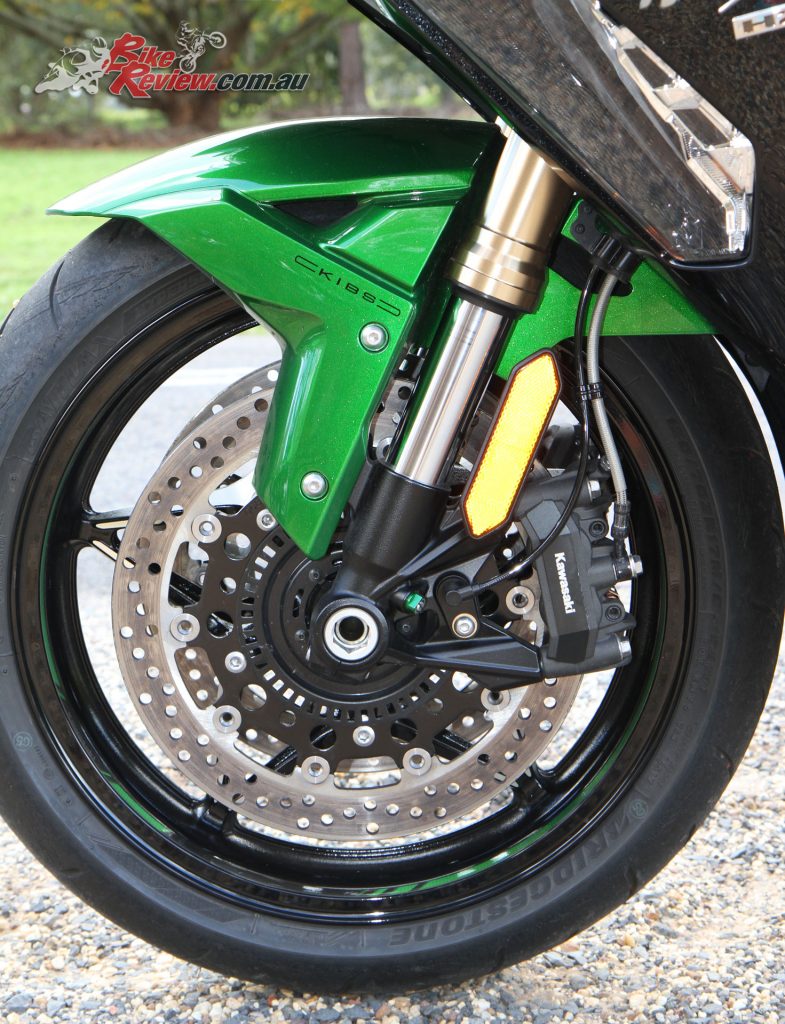
The KIBS (Kawasaki Intelligent Braking System) equipped brakes are a standout feature on the SX. They are fantastic stoppers.
I have a lot of miles under my belt on the Bridgestone S21 tyres and these come standard on the SX SE. Front feel is not as intimate as I would like on the SX. Whether that is the OEM tyre or the geometry and suspension combo, I can’t say without trying a different hoop but after recently testing the S21 on other bikes, my experience is telling me it is the bike.
The grip is there and the front-end is solid, it’s just that there is that element of trust that has to be placed on it rather than getting the full level of confidence-inspiring feedback. For a heavy bike, this is not unusual. In saying that, I had no moments whatsoever while testing and I wore the footpegs down!
The rear hoop hooked up at all times, particularly of course with the KTRC there to back up my whisky hand. I ran the KTRC (Kawasaki Traction Control) on 1 with Power Mode F on our proving ground and it was excellent, particularly after dozens of laps when the tyres were getting overworked. I turned it off as well to test the bike but soon switched it back on. I didn’t get any rear slides, you would not want to on this big mumma, it was the front wheel reaching for the sky that worried me.
At one time during the afternoon on the proving ground, I stuck to a small figure eight layout section for video passes. I must have done 30-laps in a row and what struck me is I was not totally exhausted, which I normally would be on a sportsbike for example. The way the SX likes to be ridden is sitting upright and using its own weight and a combination of throttle in puts and a bit of front brake to flick it through the esses and turns. It does all the work for the rider, the sign of good geometry.
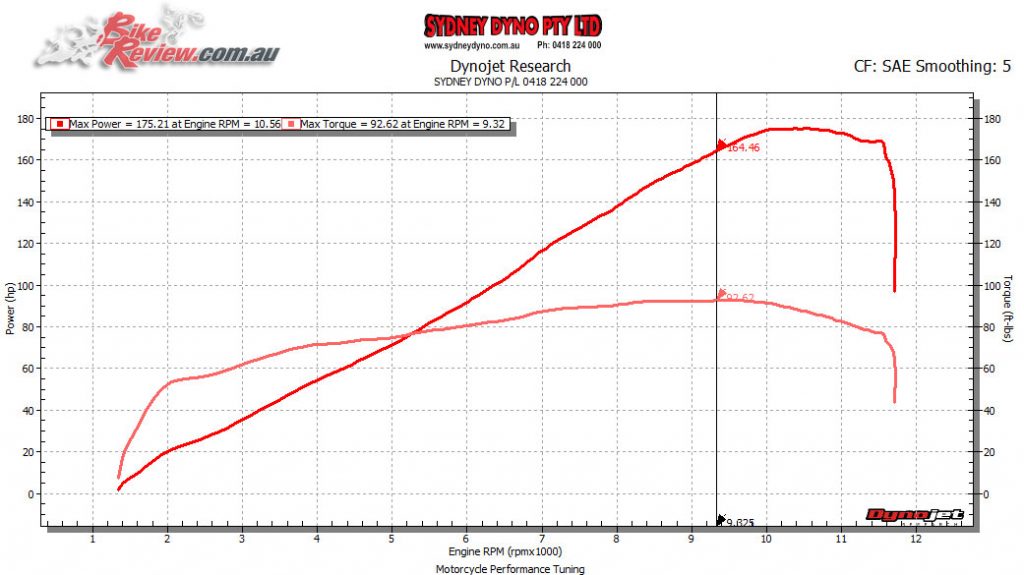
The Kawasaki Ninja SX SE has an incredible torque curve that stretches almost the entire rev range. The power is also smooth and stepless. In the upper rpm, ignition is pulled to tone it down but unrestricted the engine is eager to keep going and would surpass 200hp no dramas. Top speed we got on the dyno was 293km/h rev limiter in top.
Back to that stunningly presented 998cc inline four, on Power Mode F on our proving ground there was some abrupt initial throttle snatch. I was used to it, however, Kris jumped on and the first thing he noticed when he rode the bike was the snappy throttle. Still, much better than the Ninja H2 is.
In terms of acceleration, it is a hard one to judge without back-to-back roll-ons with the competition. The SX is such an engaging ride and the pull from that engine when it comes on full boost is simply mind blowing. Nothing else on the market gives the same feeling of sheer acceleration, however, character has as much to do with it as numbers. Oh, and that flutter of the supercharger on throttle close as excess boost is vented to atmosphere is addictive…
A Hayabusa for example weighs less and has more torque and power (see dyno graph in gallery) but there are still a huge array of variables like gearing, power over time, and also of course the riding position that combine to make the SX a bike that offers next level amounts of stupid grin factor fun when pinning the throttle… It just feels better than the rest…
To help the rapid forward progress, one of the best two-way quickshifters I’ve used does the job. I found I could just chase gears fast enough to keep up with the flashing dash, which has a programmable shift light.
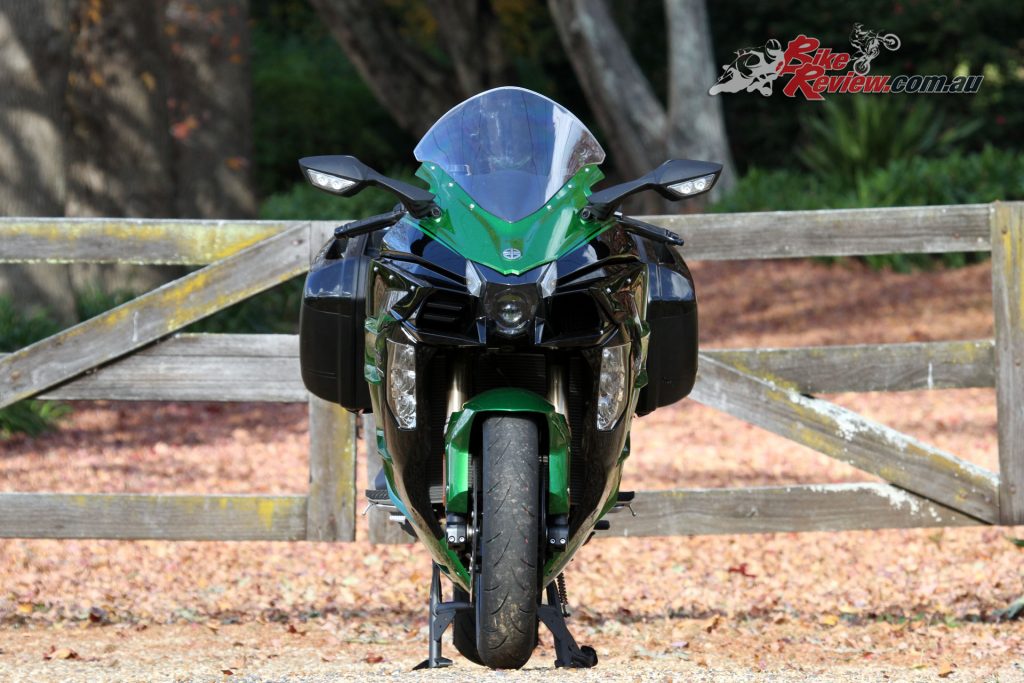
The Ninja SX SE is stealthy and really keeps that H2 theme. Headlights were not a strong point but the screen is spot on for all riding conditions.
The dash is complex, as they all are these days, but not too bad to read. There is a lot going on though but all features are welcome. Switchgear is equally complex but Kawasaki have managed to make them as usable as possible. I read the owners manual and was getting used to it all a week in, I’m sure owners will be up to scratch within a few weeks use.
There are so many options to choose from on the bike and that gives it a great element of personalisation. I left most if it alone, only switching off the cornering lights, which didn’t prove beneficial to me. They are good when you are out in the bush riding alone but when you are behind other vehicles the driver or rider ahead thinks you are flashing them, as the cornering lights switch on and off constantly. I copped the finger a few times and I was brake checked once…
The headlight is not perfect at night. It is OK in urban areas but a few night rides out of town meant I had to use high beam to safely navigate, particularly with a bit of glare off the road one rainy night on my way home. It could be improved.
Overall I really enjoyed my time with the Ninja SX SE. I used it every day as an all-rounder and a tourer, even a scratcher, and found it to be one of those bikes that does it all. It’d be a great long term keeper, I could happily own one for a decade, which answers the price question. Is it worth $35k Ride Away? It depends how badly you want it.
In my opinion, it is worth every cent. Bikes are getting expensive and for this kind of cash ride away it’d be hard to find anything with the same level of hardware, software, engineering and performance, not to mention the exclusivity and doubtless future collectable value of this first model. Service intervals are only every 12k, despite being high performance, and valve clearances only every 24k.
Quality of finish is neat, with the River symbol showcased, 3D chrome badges, colour matched panniers, a trick key, deep paint and the only odd part is that there are green stickers rather than paint just above the cornering lights, which seems like an afterthought as it isn’t even the same green.
If you are interested in the Ninja SX SE, locate a premium dealer on the Kawasaki website and go and have a decent test ride, not just a spin around the block, as there is a lot to take in…
2018 Kawasaki Ninja H2 SX SE Specifications
Price: $34,999 Ride Away See Kawasaki website for on-road cost at your postcode (link)
Click ‘How Much?’ tab to get your personalised On-Road cost (includes CTP, rego etc)
Warranty: Two years/unlimited kilometre
Colours: Emerald Blazed Green/Metallic Diablo Black
Claimed power: 146.903kW [197hp]@11,000rpm
Claimed torque: 137Nm[102ft-lbs]@10,000rpm
Wet weight: 260kg
Fuel capacity: 19L
Engine: Liquid-cooled, four-stroke in-line four-cylinder, DOHC, 16-valve, 998cc, 76 x 55mm bore x stroke, 11.2:1 compression ratio, 40mm throttle body, four dual injectors, Kawasaki supercharger, KQS (up/down), KTRC, KLCM, KEBC
Gearbox: Six speed, dog-ring
Clutch: Wet Multi-disc (Assist & Slipper clutch), hydraulic operation
Final drive: Chain
Chassis: Trellis high-tensile steel frame, swingarm mounting plate
Wheelbase: 1480mm Rake: 24.7 degrees Trail: 103mm
Suspension: 43 mm inverted fork with rebound and compression damping and spring preload adjustability, and top-out springs, 120mm travel, Uni-Trak gas-charged shock with piggyback reservoir, compression and rebound damping adjustability, remote spring preload adjuster, and top-out spring, 139mm travel
Brakes: ABS (KIBS), Dual semi-floating 320mm rotors, dual radial mount four-piston calipers, single 250mm rear rotor, two-piston caliper
Wheels & Tyres: Cast aluminium wheels, Bridgestone S21 tyres, 120/70 ZR17 (58W), 190/55 ZR17 (75W)
Dimensions:
Ground Clearance: 130mm
Seat height: 835mm
Length: 2135mm
Width: 775mm
Height: 1260mm
Instruments: TFT Display unit. Extras: Comfort seat, Electronic Cruise Control, Kawasaki Cornering Management Function (KCMF), LED headlight, taillight, turn signals, number plate light, LED cornering lights, Givi 28L panniers (colour matched)
SPECIAL THANKS: Sydney Dyno
2018 Kawasaki Ninja H2 SX SE Gallery
The Verdict | Review: 2018 Kawasaki Ninja H2 SX SE Supercharged


